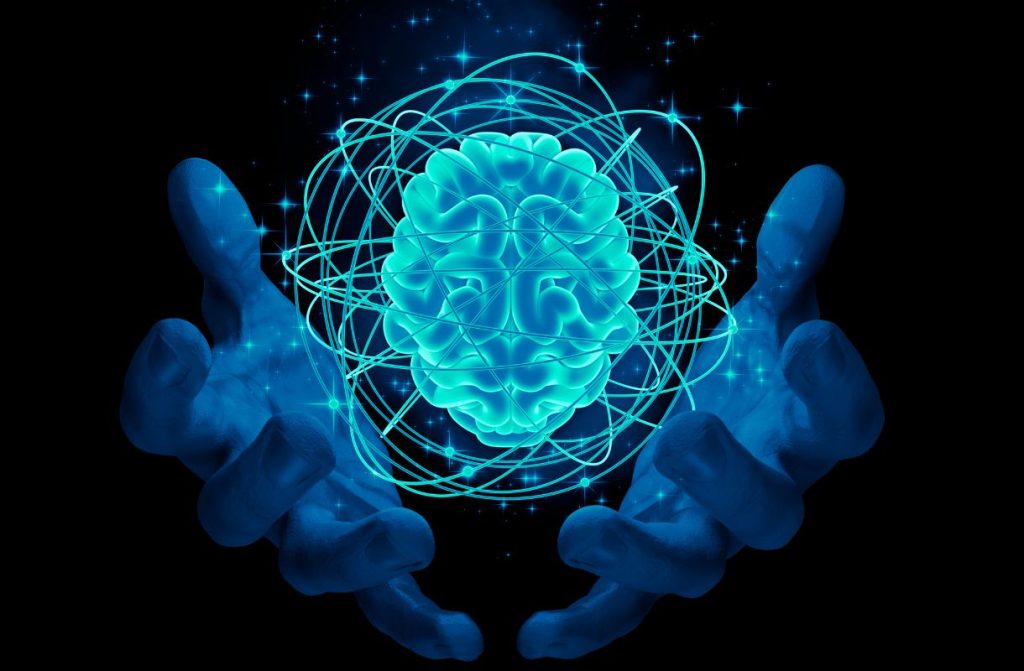Hypnosis isn’t stage theatrics. It’s a science-backed method for creating rapid, measurable shifts in perception, behaviour, and performance. When you combine Modern Hypnosis with the practical precision of NLP (Neuro-Linguistic Programming), you get a toolset that helps people overcome the really hard stuff like anxiety, trauma responses, phobias, smoking, chronic pain, and optimise the good stuff such as focus, flow, creativity, and peak performance.
Yet despite growing scientific validation, hypnosis is still widely misunderstood.
This blog explores what Modern Hypnosis really is, how it works, and what the research tells us about its power to transform lives. It also highlights some of the most common and effective applications of hypnotherapy – from managing emotional eating to healing unresolved trauma.
What is Modern Hypnosis?
Modern Hypnosis is not “you’re getting sleepy.” It’s the intentional use of focused attention, heightened suggestibility, and deepened responsiveness to therapeutic language to re-pattern automatic responses stored in the unconscious mind. Add NLP’s elegant models of language, state management, and submodalities, and you have a change methodology that’s:
- Fast (because it leverages neuroplasticity and the unconscious directly)
- Structured (because trained practitioners learn protocols they can repeat with confidence)
- Flexible (because it can be adapted to coaching, therapy, health, performance, business, and self-work)
A Modern Approach Rooted in Ericksonian Hypnosis
Modern Hypnosis, as we teach it, has deep roots in the pioneering work of Dr. Milton Erickson. Erickson was a psychiatrist and medical doctor who revolutionised the field of clinical hypnosis in the mid-20th century. Unlike the directive and authoritarian hypnosis styles of the past, Erickson’s approach was indirect, permissive, and profoundly client-centred.
He used storytelling, metaphor, and subtle language patterns to bypass resistance and speak directly to the unconscious mind. Erickson believed that every person already has the internal resources needed for healing and transformation, and that hypnosis was a way of accessing those resources gently and respectfully.
Our model of Modern Hypnosis blends these Ericksonian principles with contemporary applications of NLP and neuroscience, creating a method that is both powerful and practical in today’s world.
The Evidence for Hypnotherapy: What the Research Actually Shows
Below are key peer‑reviewed studies that demonstrate how hypnosis stacks up, often as a powerful adjunct to traditional modalities.
1) Hypnosis + CBT > CBT Alone (Meta‑analysis)
“Adding hypnosis substantially enhanced treatment outcomes.” — Kirsch, Montgomery & Sapirstein, 1995.[1]
A landmark meta-analysis found that clients receiving hypnosis alongside other psychological interventions improved more than 70% of those receiving non-hypnotic treatments alone.
2) Natural Ways to Quit Smoking with Hypnosis Therapy
“Participants in the hypnosis condition achieved significantly higher abstinence rates.” — Elkins, Rajab & Marcus, 2006.[2]
This and other studies show that hypnotherapy is one of the most effective natural methods to quit smoking, especially when compared to behavioural counselling alone.
3) Benefits of Hypnotherapy for Managing Chronic Pain Naturally
“Large effect sizes for pain reduction were observed.” — Montgomery, DuHamel & Redd, 2000.[3]
Hypnotherapy offers a powerful non-pharmaceutical approach for chronic pain management, improving both pain intensity and associated issues like sleep quality.
4) Using Hypnosis to Reduce Stress and Improve Sleep Quality
“Hypnosis was associated with enhanced flow states and improved performance.” — Pates, Maynard & Westbury, 2001.[4]
Hypnotherapy helps regulate the nervous system and quiet the racing mind—making it highly effective for people seeking natural sleep solutions and stress relief.
5) Brain Imaging: What’s Happening in the Brain?
“Hypnosis modulates connectivity in networks involved in attention, self-regulation, and body awareness.” — Spiegel et al., 2016.[5]
Modern neuroimaging shows that hypnosis can rewire the brain for confidence, emotional healing, and behavioural change. This helps explain its effectiveness for conditions like social anxiety, overthinking, and trauma recovery.
What Hypnotherapy Can Help With
Hypnotherapy’s applications are wide-ranging and supported by both research and clinical results. It is increasingly being used as a natural, non-invasive approach for:
- Emotional eating and weight loss: Hypnotherapy helps address the unconscious drivers of emotional eating and can support clients in quitting sugar or unhealthy habits by rewiring deeper behavioural loops.
- Chronic pain and health issues: Hypnosis is gaining recognition as a tool for managing chronic pain naturally—without drugs—and supporting sleep and immune function through deep relaxation and mind-body alignment.
- Anxiety, overthinking, and stress: Many clients use hypnotherapy to reduce anxious thoughts, stop overthinking, and build emotional resilience. It’s a proven way to help quiet the mind, particularly at night.
- Confidence and self-sabotage: Hypnotherapy can reprogram limiting beliefs and help individuals break the patterns of procrastination and self-sabotage, building motivation and confidence from the inside out.
- Trauma and emotional healing: Regression hypnosis and therapeutic trance work allow individuals to revisit and safely release unresolved past experiences, helping restore balance and emotional well-being.
- Support for children and teens: Hypnotherapy can gently assist young people with phobias, sleep disturbances (like bedwetting), and school-related stress, using age-appropriate, empowering techniques.
- Breaking bad habits: Whether it’s smoking, nail biting, or mindless scrolling, hypnosis offers a powerful framework for interrupting habit loops and installing new behaviours aligned with personal values.
Hypnotherapy is also increasingly available through online sessions, which studies show can be just as effective as in-person work when facilitated professionally.
Why Hypnosis and NLP Work So Well Together
NLP gives hypnosis practitioners:
- Precision language patterns for suggestion and reframe work
- State calibration and anchoring for rapid emotional shifts
- Submodality interventions that pair beautifully with hypnotic phenomena
Hypnosis gives NLP practitioners:
- Deeper access to unconscious processes (not just conscious ‘aha’ moments)
- Smoother, cleaner transitions into change work
- More robust, embodied outcomes that stick
Together, they enhance each other’s impact.
Why More Professionals Are Turning to Hypnosis
As the evidence base grows, more coaches, therapists, doctors, athletes, and business leaders are exploring hypnosis as a legitimate, effective tool for:
- Behavioural change
- Mental health support
- Habit reversal
- Peak performance
- Trauma-informed work
- Self-leadership and mindset mastery
It’s no longer “alternative.” It’s becoming integrated.
Want to Learn How to Do It Properly? Get Certified as a Hypnotherapist
If you’re curious to learn how to use hypnosis to help others – or yourself – you might consider formal training. Our 3‑Day Modern Hypnosis Certification Training teaches hypnosis the right way: ethically, safely, and with real-world application.
You’ll learn how to:
- Induce and deepen trance states
- Use hypnotic language
- Shift beliefs, habits, and emotional responses
- Combine NLP and Hypnosis for powerful results
It’s hands-on, practical, and designed to give you the skills and confidence to start using it immediately.
Contact us or check out our trainings on our website for more information.
[1] Kirsch, I., Montgomery, G., & Sapirstein, G. (1995). Hypnosis as an adjunct to cognitive–behavioral psychotherapy: A meta-analysis. Journal of Consulting and Clinical Psychology, 63(2), 214–220.
[2] Elkins, G., Rajab, M. H., & Marcus, J. (2006). A randomized trial of hypnosis for smoking cessation. International Journal of Clinical and Experimental Hypnosis, 54(1), 1–12.
[3] Montgomery, G. H., DuHamel, K. N., & Redd, W. H. (2000). A meta-analysis of hypnotically induced analgesia. Pain, 83(2), 291–295.
[4] Pates, J., Maynard, I., & Westbury, T. (2001). An investigation into the effects of hypnosis on the flow state and golf-putting performance. Contemporary Hypnosis, 18(4), 161–170.
[5] Spiegel, D., Jiang, H., White, M., & Greicius, M. (2016). Brain activity and functional connectivity during hypnosis. Cerebral Cortex, 26(8), 3283–3295.
[6] Oakley, D. A., & Halligan, P. W. (2013). Hypnotic suggestion: Opportunities for cognitive neuroscience. Nature Reviews Neuroscience, 14(8), 565–576.



